45 energy on food labels
Understanding Food Labels - The Nutrition Source All FOP labels in the U.S. are voluntary, which allows food manufacturers to highlight or hide the nutrition information they choose to help promote or preserve sales. If warning labels became mandatory, as public health advocates propose, the pressure on manufacturers would increase to change certain products to improve their nutritional quality. Understanding Food Labels - Nutrition: Science and Everyday Application ... The value printed on the Nutrition Facts panel is the percent DV, which tells you how much one serving of the food contributes towards meeting the daily requirement for that nutrient. The FDA uses the following definitions for interpreting the %DV on food labels:4. 5%DV or less means the food is low in a nutrient.
How Do They Calculate Calories on Food Labels? Additional research shows that energy values using traditional Atwater factors overestimate the energy value of almonds and pistachios by 32% and 5%, respectively. Our tips: We want to believe that the information on food labels is 100% accurate, but in reality, it is a compilation of best available data rounded to whole numbers.
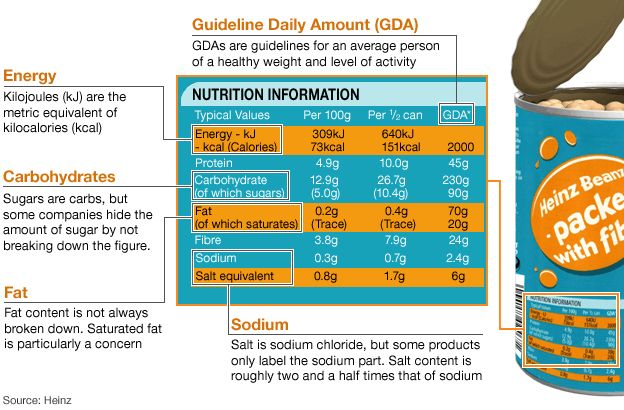
Energy on food labels
Labelling-Determination of the energy content of food Carbohydrates, fats and protein are the major energy sources in foods although alcohol, organic acids and polyols may be important in particular foods. Polyols have been called sugar alcohols but are neither sugars nor alcohols. They should be considered as reduced energy sugar-replacers, sweeteners and are included in total carbohydrates. Energy and nutrients - Food A Fact Of Life Compare a variety of similar food that has been modified, for instance to reduce the fat content, e.g. potato crisps that have been baked rather than fried. Discuss the claims that are made on the packaging and/or advertising. Review the food labels and compare the nutritional value. Ask the pupils what they notice about the ingredients and ... Body Energy Club | Vitamins & Supplements Canada | Health Food … Body Energy Club gives you the health and energy boost to perform your best every day. Visit us in-store for one of our famous smoothies and healthy bowls, or shop online for quality vitamins & supplements from trusted brands. Free shipping to Canada over $39.
Energy on food labels. How to Calculate Energy From Foods | livestrong Step 1 Multiply grams of carbohydrate in the food by 4 calories per gram. A calorie is a unit of how much energy is in a given amount of food, also called a kcal. Regardless of whether the carbohydrate in food is sugar or starch, all carbohydrates provide the body with 4 calories/gram, explains Dr. Lauralee Sherwood in her book "Human Physiology." How to calculate the Energy available from foods - Time-to-Run To calculate the energy available from a food, multiply the number of grams of carbohydrate, protein, and fat by 4,4, and 9, respectively. Then add the results together. For example, 1 slice of bread with a tablespoon of peanut butter on it contains 16 grams carbohydrate, 7 grams protein, and 9 grams fat : 16g carbohydrate x 4 kcal/g = 64 kca l. How to read food labels | healthdirect Sugar: Sugar is a type of carbohydrate. It is better to choose healthier carbohydrates and to limit foods that are high in added sugars. Fibre: High fibre foods such as wholegrain bread and cereals improve digestion and help you to feel full. Sodium: This tells you how much salt the product contains. Eating too much salt is linked to high blood pressure and can lead to heart disease, … Food labels should be updated to show exercise needed to burn … 30.09.2022 · Experts have called for food labels to be changed to show how much exercise you will need to do in order to burn off the calories. Researchers at Loughborough University put this idea to the test ...
Food Labels (for Teens) - Nemours KidsHealth A food with 5% or less of a nutrient is low in that nutrient. A food with 10%-19% of a nutrient is a good source of that nutrient. A food with 20% or more of a nutrient is high in that nutrient. The information on food labels is based on an average adult diet of 2,000 calories per day. The actual number of calories and nutrients that kids ... Understanding food labels: portions, energy | Health24 When next you look at a food label that says 'low in energy', first check the label to see how much energy it really contains. That energy bar we were discussing earlier may contain as much as 500kJ per 50g portion (which means it contains 1000kJ per 100g). Therefore, it is anything but 'low in energy'. Energy content of slimming products Understanding Food Nutrition Labels | American Heart Association Remember that the information shown in the label is based on a diet of 2,000 calories a day. You may need less or more than 2,000 calories depending upon your age, gender, activity level, and whether you're trying to lose, gain or maintain your weight. When the Nutrition Facts label says a food contains "0 g" of trans fat, but includes ... Food energy - Wikipedia Many governments require food manufacturers to label the energy content of their products, to help consumers control their energy intake. To facilitate evaluation by consumers, food energy values (and other nutritional properties) in package labels or tables are often quoted for convenient amounts of the food, rather than per gram or kilogram; such as in "calories per serving" or "kcal per 100 ...
Food labels - NHS These labels include information on energy in kilojoules (kJ) and kilocalories (kcal), usually referred to as calories. They also include information on fat, saturates (saturated fat), carbohydrate, sugars, protein and salt. All nutrition information is provided per 100 grams and sometimes per portion of the food. Tyres | European Commission The rolling resistance in a tyre is an indicator of its energy efficiency, which has an impact on fuel consumption. Different tyres can have different rolling resistance for a number of reasons, including the design and structure but also the tread compounds (amount of silica or carbon black). The tyre pressure also affects rolling resistance, as a pressure lower than prescribed … Food Labeling & Nutrition | FDA Food labeling is required for most prepared foods, such as breads, cereals, canned and frozen foods, snacks, desserts, drinks, etc. Nutrition labeling for raw produce (fruits and vegetables) and... Food Labels | Nutrition.gov What's New with the Nutrition Facts Label. HHS, Food and Drug Administration. The U.S. Food and Drug Administration (FDA) has updated the Nutrition Facts label on packaged foods and beverages with a fresh design that will make it easier for you to make informed food choices that contribute to lifelong healthy eating habits. What's in a Name?
Energy-efficient products | European Commission Information on energy savings, energy labelling and ecodesign requirements presented per product. Skip to main content. Home - European Commission. en English. Search. Search this website. Search. You are here: Home; Energy, Climate change, Environment; Standards, tools and labels; Products - labelling rules and requirements; Energy label and ecodesign; Energy …
Food Definition & Meaning | Dictionary.com Food definition, any nourishing substance that is eaten, drunk, or otherwise taken into the body to sustain life, provide energy, promote growth, etc. See more.
Nutrition labeling: energy values of foods and fat substitutes Prominent among the nutrition information required is labeling of the total energy content of food and the energy content derived from fat. In Title 21, Code of Federal Regulations, five methods are specified for determining the energy content of foods.
Energy Content of Food Lab Report Answers - SchoolWorkHelper Put the thermometer in the water and find its temperature. Takedown all the readings. Repeat steps 1 to 12 for 3 times for each different type of chip. Find the average initial temperature, final temperature, and mass of the food sample. Use the formula, Energy = Volume of water x (initial-final temperature) x 4.2/ mass of food sample.
European Union energy label - Wikipedia A new energy label, introduced in 2010, is based on the energy efficiency index (EEI), and has energy classes in the range A+++ to D. The EEI is a measure of the annual electricity consumption, and includes energy consumed during power-off and standby modes, and the energy consumed in 220 washing cycles. For the washing cycles, a weighted mix consisting of …
Understanding Ingredients on Food Labels | American Heart ... Mar 06, 2017 · Food labels are an important source of information about calories and the nutritional value of the foods you eat, a crucial tool in building a heart-healthy diet. The Nutrition Facts information is always displayed in the same orderly fashion and helps you understand how much of certain nutrients that you need to limit are contained in the ...
How to Understand and Use the Nutrition Facts Label | FDA - U.S. Food ... That is two times the calories and nutrients shown in the sample label, so you would need to double the nutrient and calorie amounts, as well as the %DVs, to see what you are getting in two...
Food Labels | CDC - Centers for Disease Control and Prevention If you eat the whole thing, you are eating 8 times the amount of calories, carbs, fat, etc., shown on the label. Total Carbohydrate shows you types of carbs in the food, including sugar and fiber. Choose foods with more fiber, vitamins, and minerals. Choose foods with lower calories, saturated fat, sodium, and added sugars. Avoid trans fat.
Food Labels: Calories VS Energy - Marci R.D. In case you haven't noticed, their food labels don't contain the word "calories." Instead, they use the word "energy." Every time I see that it brings a smile to face. In my opinion, the word calorie seems to possess a laundry list of negative associations. Count your calories Cut your calories Burn your calories Choose your calories wisely
Energy in Food and Nutrition | Chemistry for Non-Majors - Course Hero For the snack food in this example, most of the energy is coming from fat first, then from carbohydrates and finally from protein when these three sources of energy are considered. Summary. An example of how to calculated the energy in the food that we consume, based on food nutrition labels has been illustrated.. Practice. For more practice ...
Food labels & nutritional information | Raising Children Network Energy is listed on the panel as kilojoules (kJ). Fats, protein and carbohydrates all provide your body with the energy or kilojoules you need to function and do your daily activities. When comparing similar foods, lower energy usually means lower fat or sugar, which means that the food is a better choice for most people. Fat, sugar and salt
Food labels: a guide to reading nutrition labels - MyDr.com.au The nutrition label displays the quantity of energy (measured in kilojoules) found in a serving and in 100 grams (or 100 millilitres if liquid) of the product. However, there are no standards for serving sizes and they are decided by the manufacturer.
Body Energy Club | Vitamins & Supplements Canada | Health Food … Body Energy Club gives you the health and energy boost to perform your best every day. Visit us in-store for one of our famous smoothies and healthy bowls, or shop online for quality vitamins & supplements from trusted brands. Free shipping to Canada over $39.
Energy and nutrients - Food A Fact Of Life Compare a variety of similar food that has been modified, for instance to reduce the fat content, e.g. potato crisps that have been baked rather than fried. Discuss the claims that are made on the packaging and/or advertising. Review the food labels and compare the nutritional value. Ask the pupils what they notice about the ingredients and ...
Labelling-Determination of the energy content of food Carbohydrates, fats and protein are the major energy sources in foods although alcohol, organic acids and polyols may be important in particular foods. Polyols have been called sugar alcohols but are neither sugars nor alcohols. They should be considered as reduced energy sugar-replacers, sweeteners and are included in total carbohydrates.

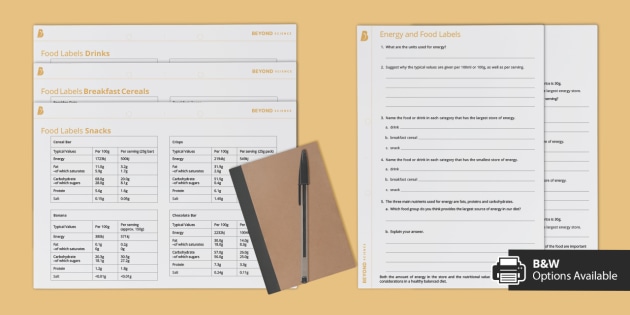

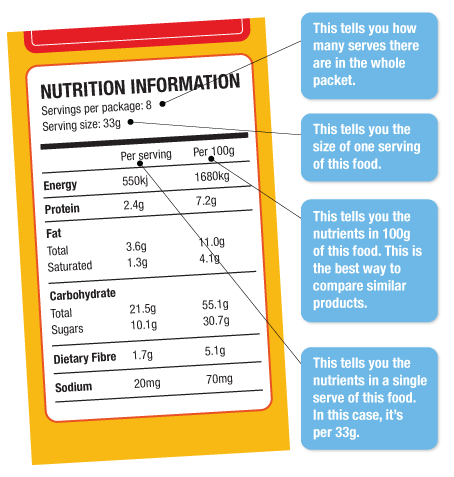




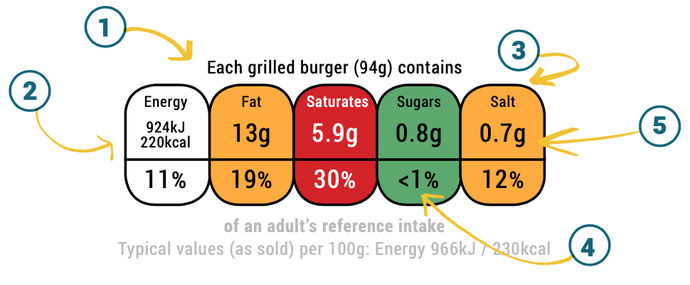



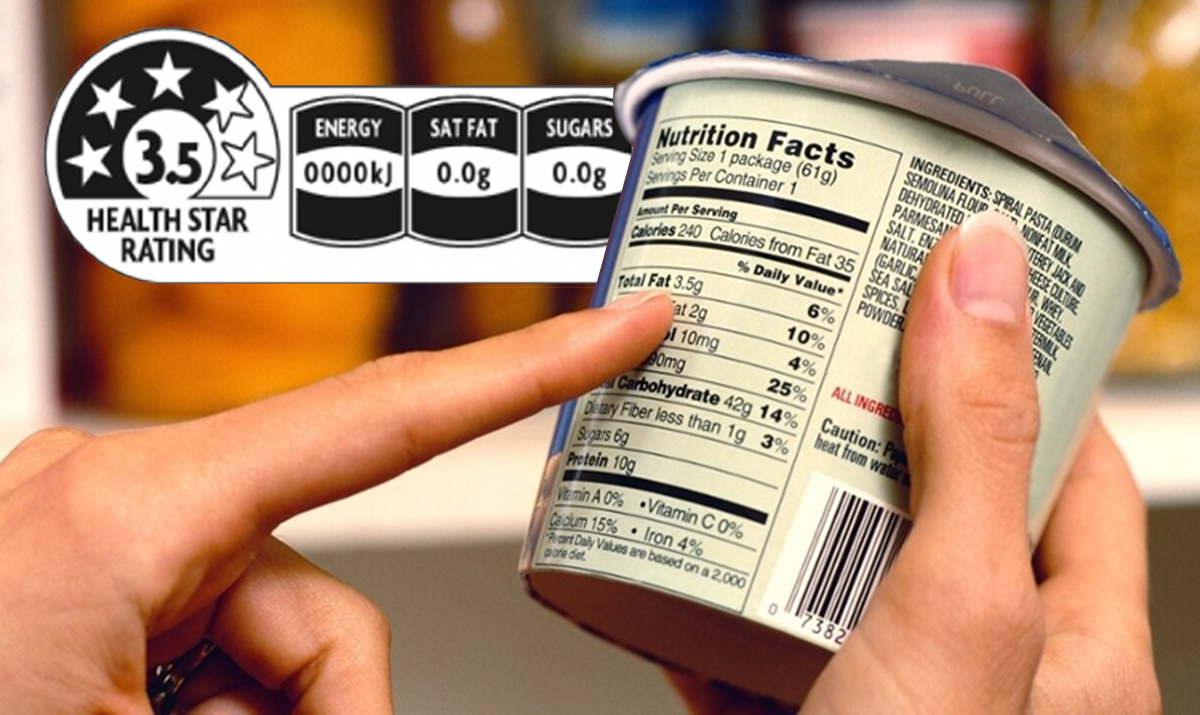

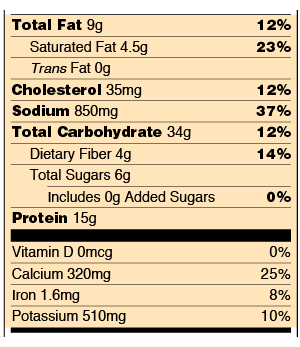






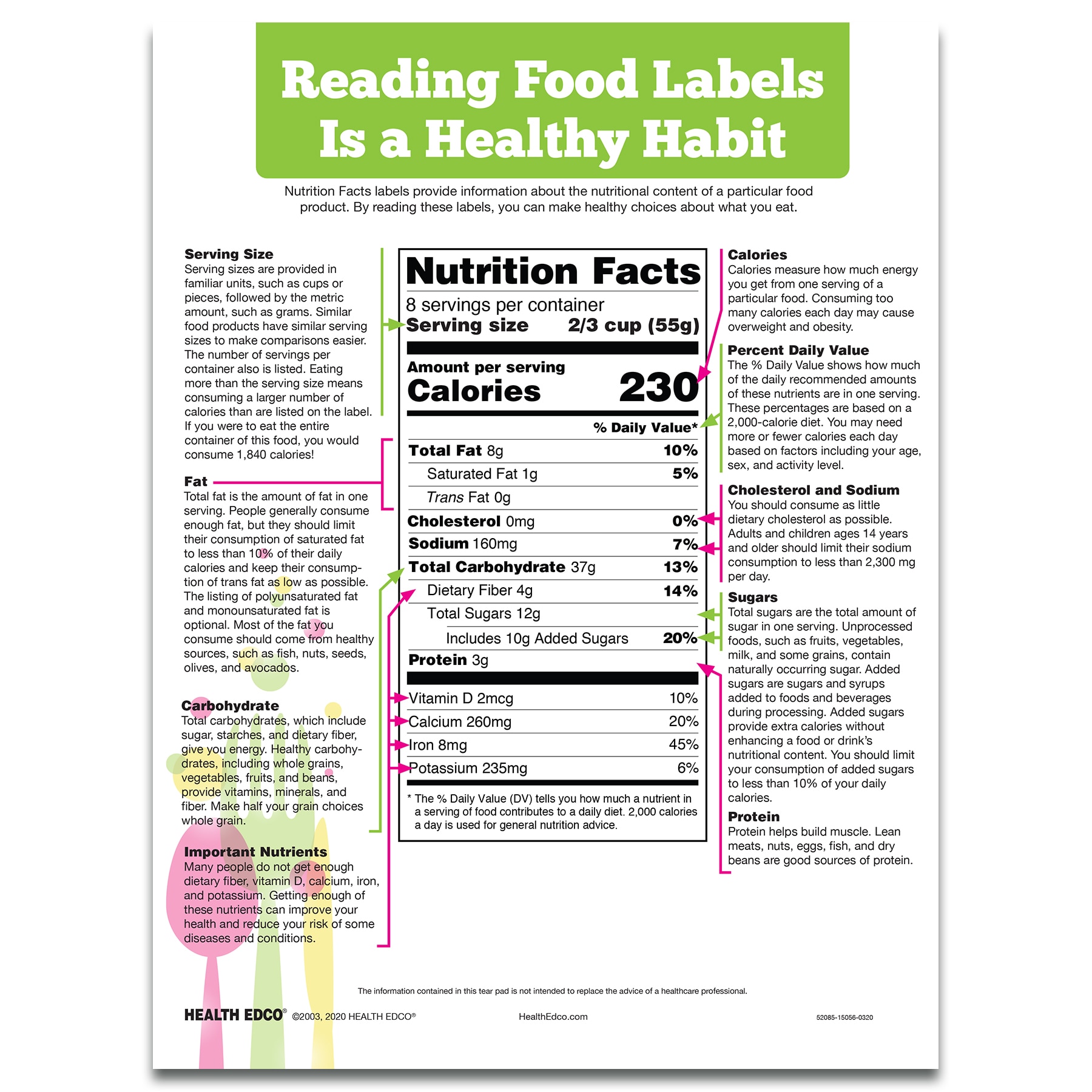

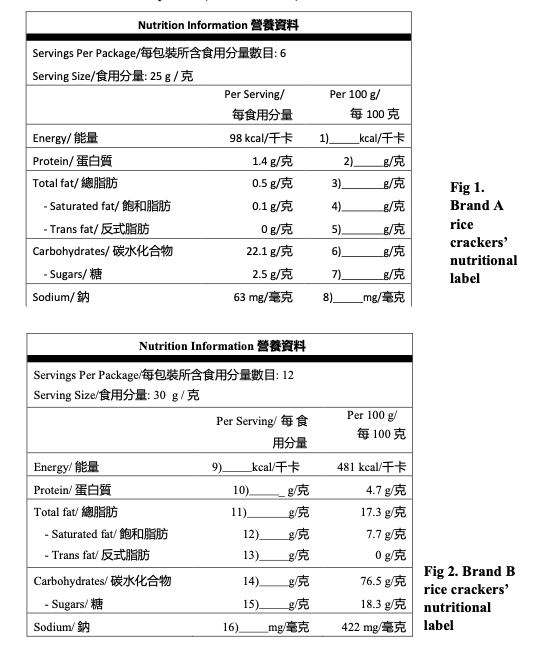







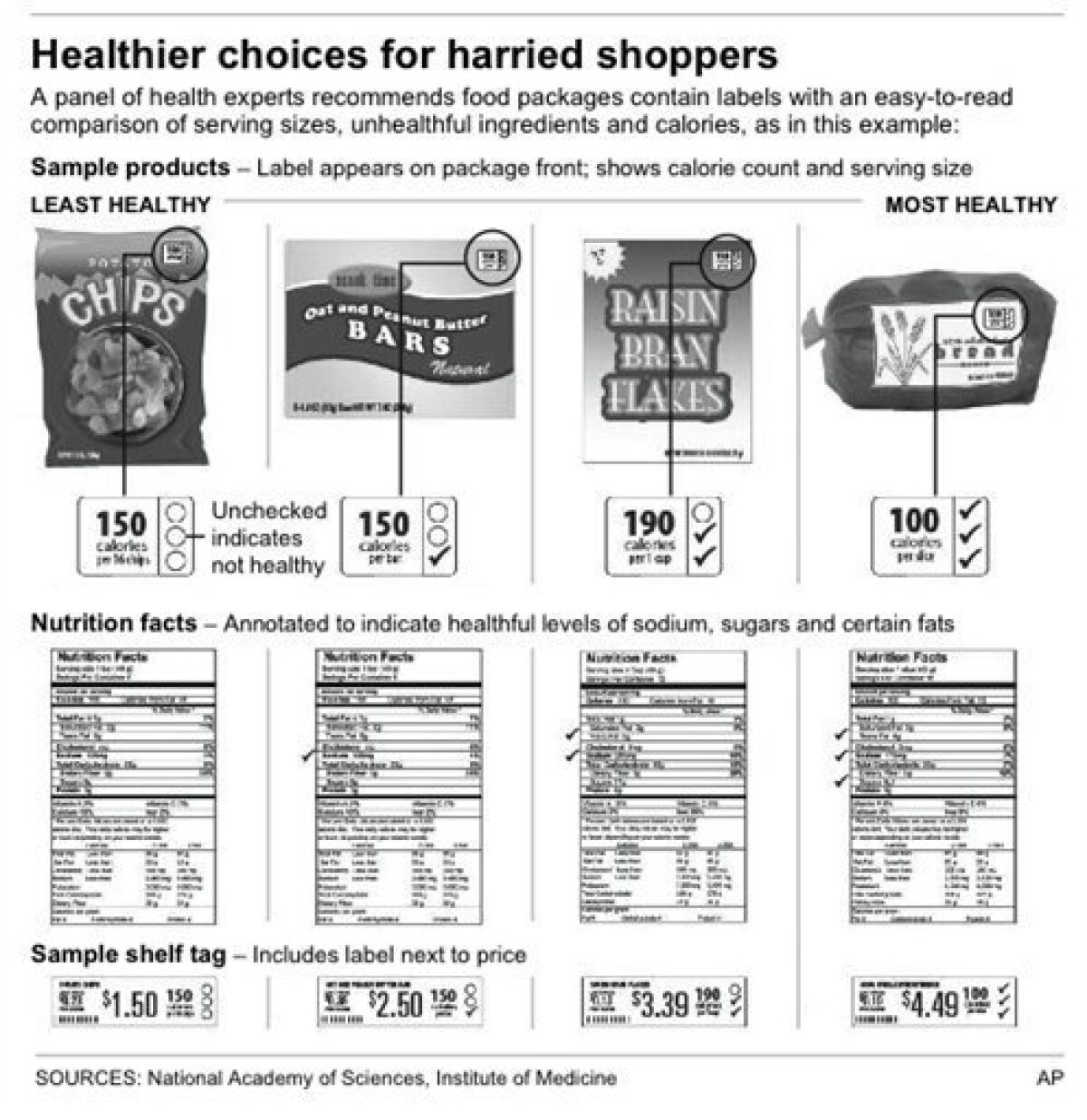

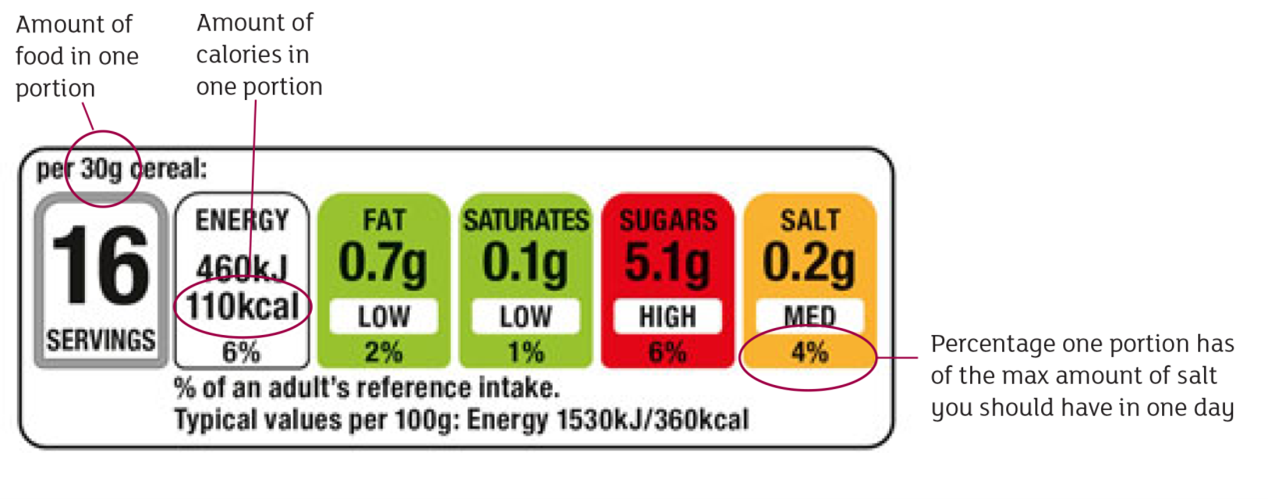




Post a Comment for "45 energy on food labels"